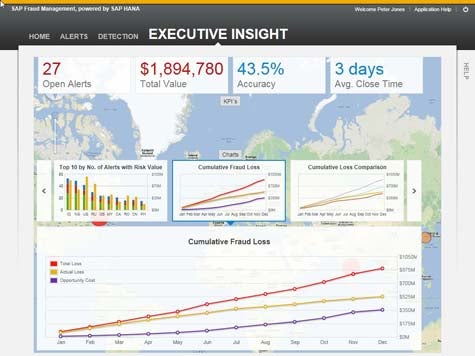Estimates concerning the amount of fraud that regularly occurs vary widely, but it’s safe to say it involves multiple trillions of dollars. It’s not hard to see how that much fraud acts as a weight on the economy, not to mention corporate profits. The challenge has always been finding ways to identify that fraud in enough time to actually prevent its occurrence.
With the rise of in-memory computing platforms such the SAP High Performance Analytics Appliance (HANA) platform, we may finally by approaching that point.
SAP recently launched an SAP Fraud Management analytic application that has been specifically developed to run on HANA. According to Michael Lortz, enterprise software product management at SAP, one of the major historical challenges with identifying fraud is having the compute horsepower needed to analyze transactions in real time for signs of fraud. An in-memory computing platform such as HANA provides that horsepower in a way that doesn’t add overhead to the actual processing of the transaction, says Lortz.
Most organizations could be losing as much as five percent of their revenue to fraud. In an era of razor-thin profit margins, that means the difference between making a quarterly goal and not making it can come down to fraud prevention. Unfortunately, because most fraud prevention is focused on identifying it after it already happened, most organizations chalk fraud up to the cost of doing business.
But over the course of a year, all those fraudulent transactions add up to the point where there now exists an entire alternative economy. Analytics applications may not eliminate that economy all together, but by analyzing transactions in real time they can certainly reduce its size by an order of multi-billion-dollar magnitude.



